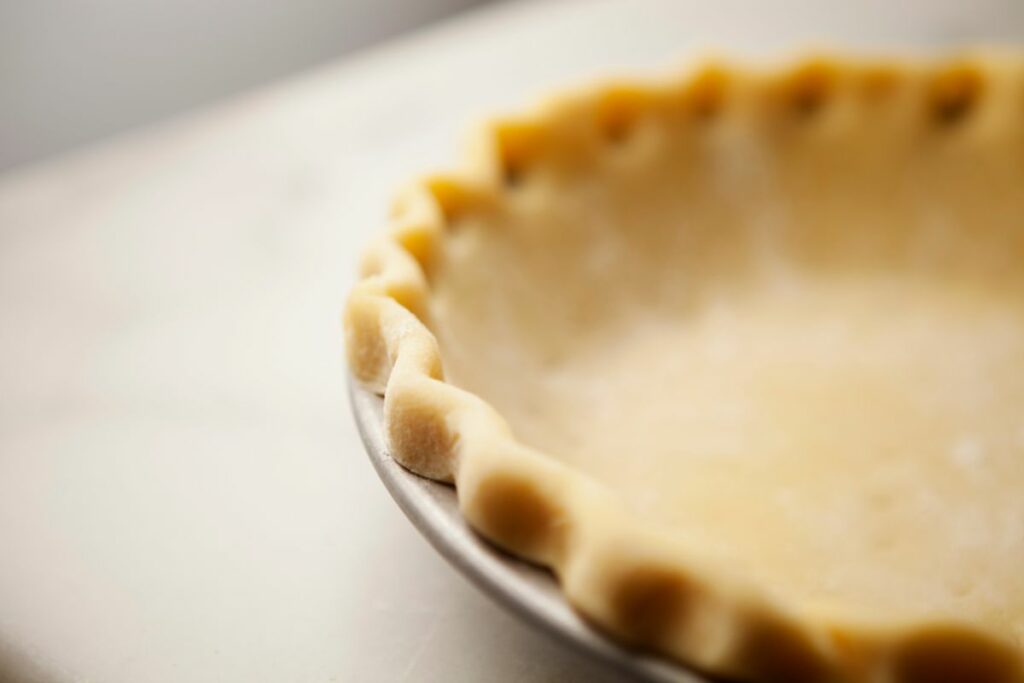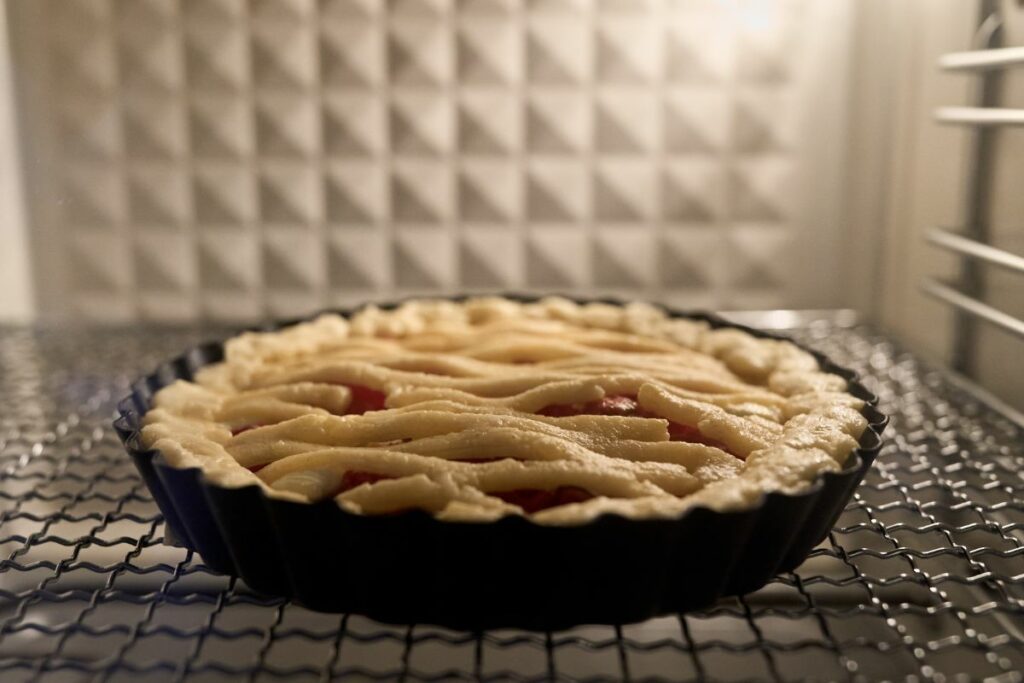Have you noticed how the edges of pie crust always seem to brown much quicker than the rest of the pie? This can lead to the crust burning and becoming overly crispy. The result? A ruined dessert, and no one wants this!

When it comes to baking pies, achieving a beautifully flaky and golden crust is a top priority. Fortunately, there are ways to protect the edges of your pie crust, so you can enjoy the best possible pie every time.
From using aluminum foil to setting the right temperature, we have all the answers in today’s guide.
Below, we will explore various techniques and tips to help you safeguard the edges of your pie crust, ensuring a delightful balance of texture and taste with every scrumptious bite.
Create An Aluminum Pie Shield
Arguably the most practical method of protecting your pie crust is by creating a pie shield. Fortunately, this is easier to do than you may think.
All you need is a sheet of aluminum foil, and your pie crusts can breathe a sigh of relief. Simply get a sheet of foil and cut out a circular piece, but make sure it is large enough to cover the edges of the pie crust completely.
Whilst you can prepare the foil before you have your pie made, it is best, and easiest, to create the crust protector when you have the pie crust ready in front of you, so you can measure it out accordingly.
As long as the foil is wide enough to cover the pie edges, they should be protected.
When it comes to baking your pie, you do not need to place the foil on the edges beforehand. It is recommended that you add the foil after the pie has been in the oven for around forty minutes.
That being said, you should keep a close eye on the pie crust during this time to ensure there are no signs of burning. If there are, take the pie out and cover with the foil protector.
After forty minutes or so, simply take the pie crust from the oven and place your newly created shield on top of it. Then, place the pie crust back into the oven and continue baking the pie for the required time.
Using a foil protector is the cheapest and easiest way to prevent your pie edges from getting burned. However, it can be a little tedious having to cut out a piece of foil every time you bake a pie.
Don’t worry if this method is not for you, as there are some other methods which we can explore. Let’s take a look at them below.
Purchase A Pie Crust Shield
Instead of having to make your own pie crust shield, you can go down the easier route and buy a ready-made one that can be used time and time again.
These pie shields replicate the same method as discussed above but takes the hassle out of making one. If you have no time to create your own foil protector, then we suggest investing in a ready-made product.
When making your own pie shield out of aluminum foil, you will have to dispose of them every time. But, by purchasing one, you can cut down on waste.
Best of all, these protectors are typically highly affordable and do exactly what you need them to do every time – protect your pie crusts!
You can find different-sized pie crust shields online, such as those for nine-inch and ten-inch pies. Simply choose the appropriate size you need, and your crusts will live to see another day.
You can also use commercial pie crusts for other purposes, with some using them for cake making.
Also, you can place them on your pie at the beginning of the pie-making process, but we recommend doing so after forty minutes, as discussed above.
Choose The Right Temperature

Yes, we have all experienced a burnt pie crust at some point. But, sometimes, even with the measures taken above, you may pull the pie from the oven and still find the edges burned or overly crispy.
One common factor that is an easy fix is the oven temperature. You should always bake your pies at the recommended temperature to ensure the best results. This can typically be found in the pie’s recipe.
Always take the time to carefully read the recipe and set your oven at the correct temperature. If you accidentally bake the pie for too long or at a higher temperature than instructed, you’ll most likely end up with some burning issue.
To avoid this, double-check the recipe and consider baking at a lower temperature if your oven tends to run hotter.
Remember, by being mindful of the recipe instructions and making small adjustments, you can prevent burning and enjoy perfectly baked pies with intact, delicious crust edges.
Oven Issues
When you pull the pie from the oven, have you ever noticed that just one side is burned? This can be frustrating to say the least and also pretty confusing. However, this is pretty common.
If you notice one side is perfectly cooked whilst the other is burned, it could be a sign that your oven has some hot spot issues.
The hot spot is a particular section of an oven that gets hotter than it’s supposed to. If an oven has a hot spot, it will likely burn items of food that are placed in this section.
The good news is that it’s pretty simple to check whether your oven has a hot spot problem. Just place a few pieces of bread on the oven rack and toast them at 350 degrees Fahrenheit for a quarter of an hour. Then, take the bread out and inspect it.
If you notice that some of the bread pieces are burned on one side, that’s a good indication that your oven has hot spots. If this is the case, it is suggested that you avoid baking anything on the side affected by hot spots.
Of course, this is not ideal, and sometimes you need to use the whole oven space for baking or cooking. If so, you can try turning your pie part way through baking.
Doing so should help the pie bake more evenly all over, rather than just on one side too fast and too strong.
Can The Type Of Pie Crust Affect The Likelihood Of Burning?
Yes, the type of pie crust can influence the chances of burning. Different crust recipes may have different baking temperature requirements. For example, a butter-based crust may brown faster than a crust made with vegetable shortening.
It’s essential to follow the specific instructions and recommendations for the type of crust you are using. Additionally, pre-baking the crust before adding the filling can help prevent it from becoming too dark during the final baking process.
In Summary
All pie makers need to take measures to protect their pie crusts. Whether it’s making a pie protector or setting the oven to the correct temperature, there are various methods to ensure your pie crust is perfectly golden and delicious every time.
- How To Reheat A Cheesesteak - November 5, 2023
- What Are Three Must Have Kitchen Knives? - September 22, 2023
- How To Protect Edges Of Pie Crust - June 15, 2023









